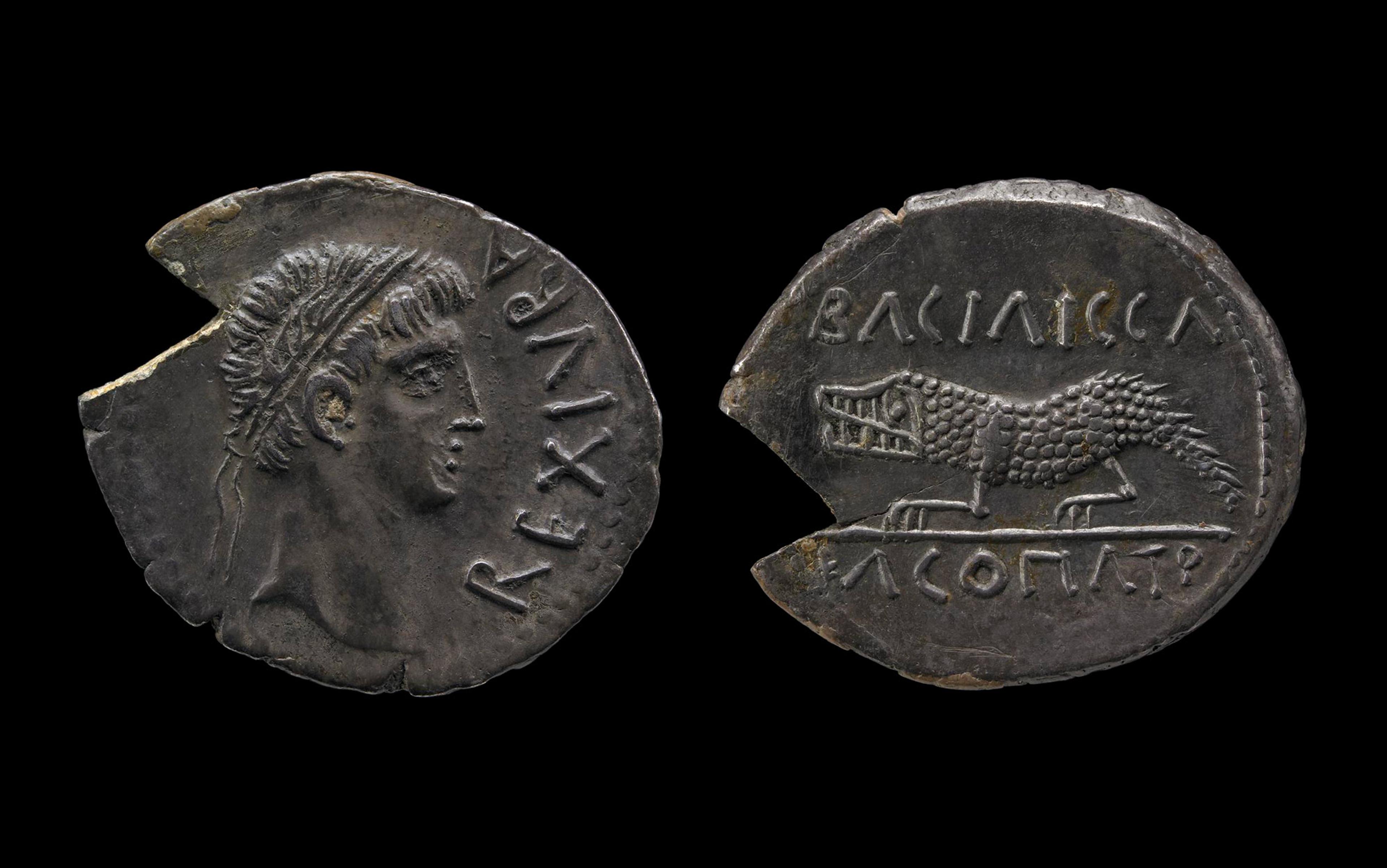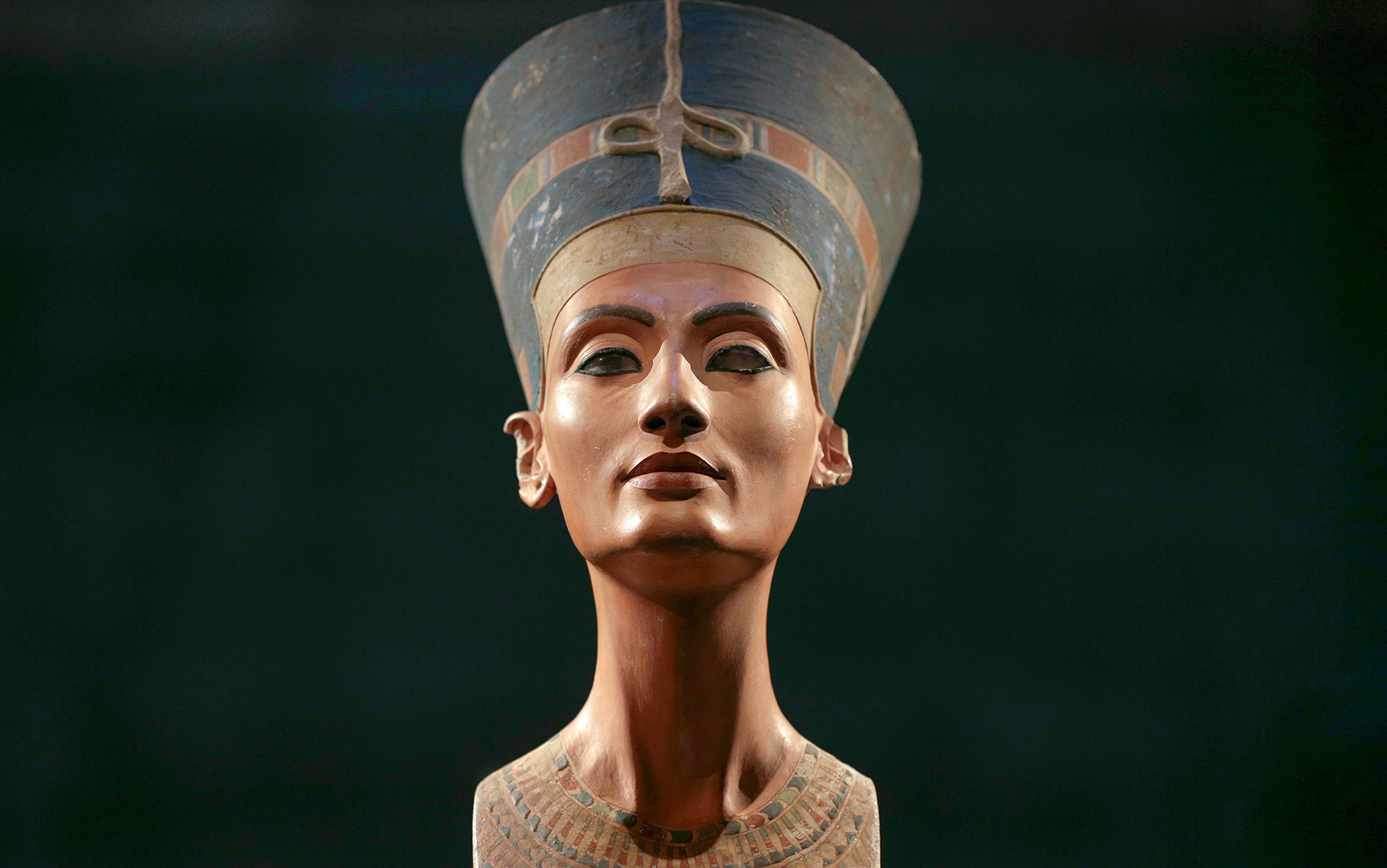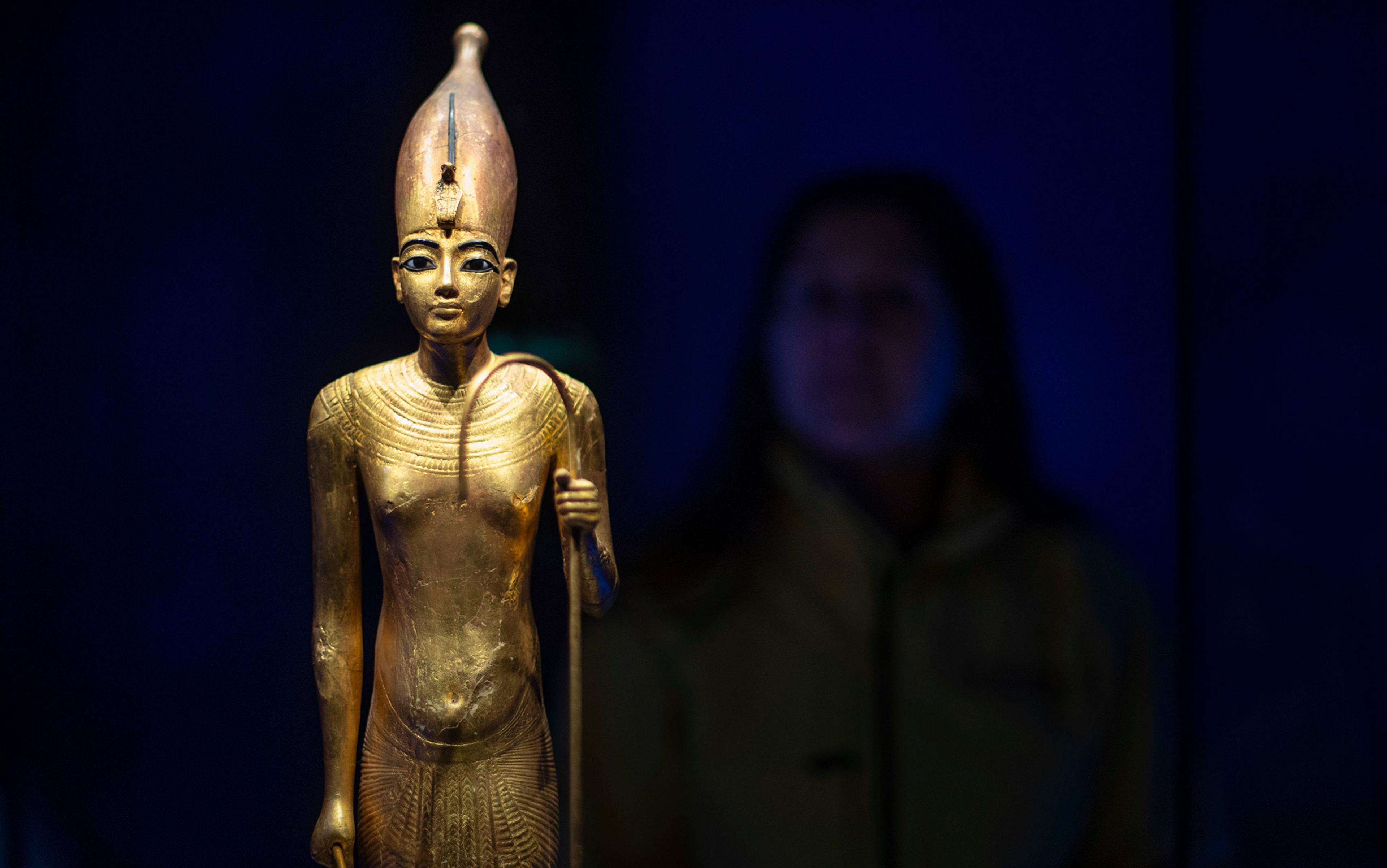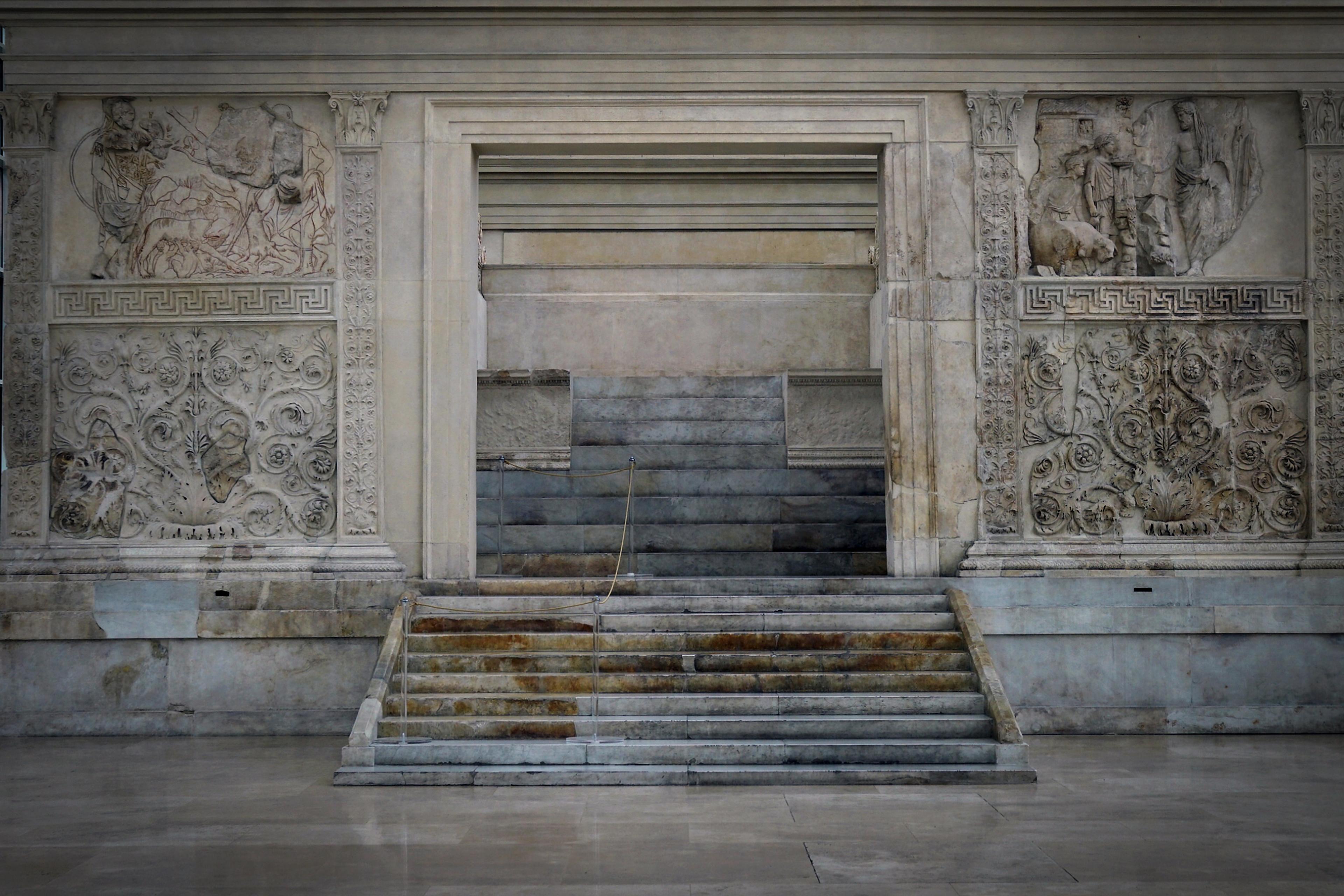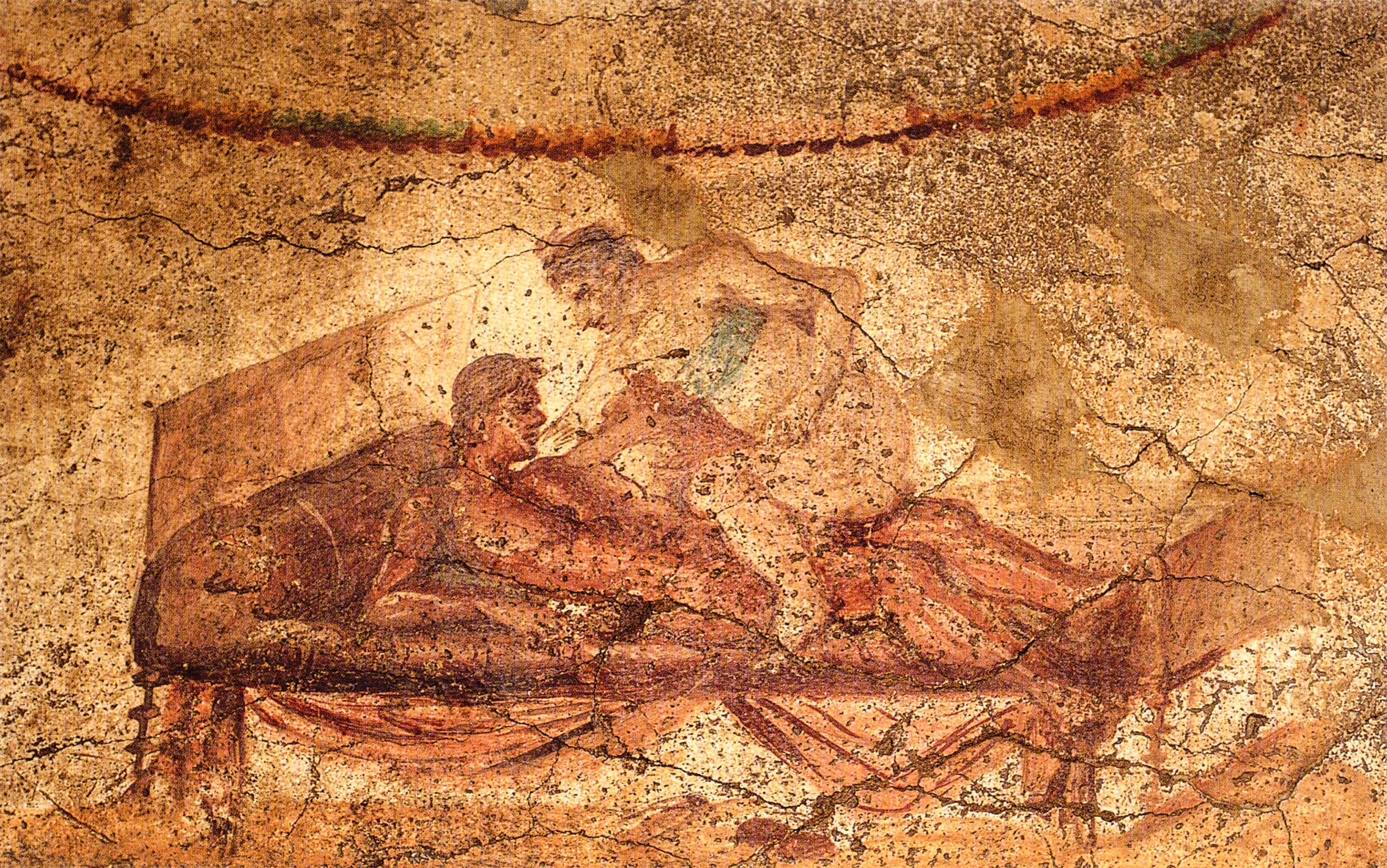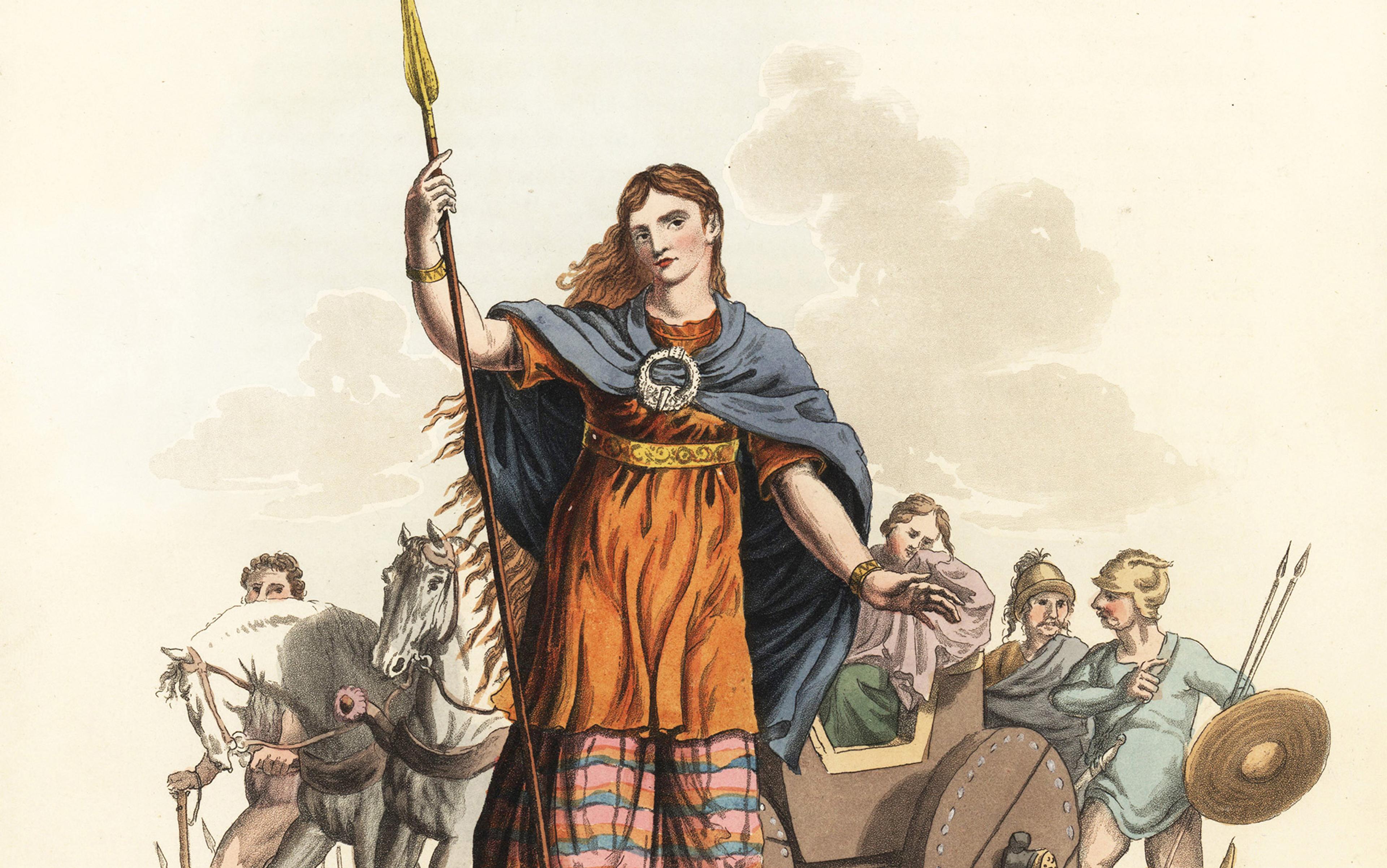You may not have heard of the Roman client kingdom of Mauretania, not to be confused with the contemporary African country Mauritania. The former existed for a scant 65 years, from around 25 BCE, when it was created by the first Roman emperor Augustus, until 40 CE, when its second and final king was executed by Augustus’ great-grandson Gaius, better known to posterity as Caligula. Unlike its contemporary – the Roman client kingdom of Judea (modern Israel), whose history was recorded for posterity by the historian Josephus – no written record of Mauretania (modern Algeria and Morocco) has survived from antiquity. If we want to attempt to reconstruct what was going on in the kingdom during this period, we have to look at other types of evidence – archaeological evidence. By far the most informative type of archaeological evidence for this time and place is numismatic: the coinage issued by King Juba, Queen Cleopatra Selene, and their son King Ptolemy – three historical figures of whom you may likewise not have heard.
In my opinion, the most historically significant of the three is Cleopatra Selene, the daughter of Cleopatra VII, Queen of Egypt, and Marcus Antonius (known today as Mark Antony), Roman consul and triumvir. The other Cleopatra, if you will. While considerably less well-known than her infamous mother, she was arguably a more successful and ultimately more effective Roman client queen.
Cleopatra Selene was born in 40 BCE, in the wake of her parents’ renowned and fabled encounter in the city of Tarsus, so memorably described by Antony’s biographer Plutarch, invoked by William Shakespeare, and painted by Sir Lawrence Alma-Tadema. This meant that she was around 10 years old when the civil war between her father and his fellow triumvir Gaius Julius Caesar Octavianus (known today as Octavian, he would go on to become the first Roman emperor Augustus) culminated in Octavian’s victory over Antony and Cleopatra at the Battle of Actium in 31 BCE, and his conquest and annexation of Egypt the following year. After her parents’ suicides, she was taken back to Rome by Octavian and spent the remainder of her childhood in the household of his sister Octavia, who also happened to be her father’s ex-wife and the mother of two of his daughters, Cleopatra Selene’s half-sisters.
While Octavian’s biographer Suetonius claimed that he was a kindly father figure and reared her as carefully as if she was his own flesh and blood, there was undoubtedly a political dimension to this decision, and it was probably his foremost concern. Retaining control of Cleopatra Selene meant that any potential threat to Rome’s power over Egypt was neutralised before it could gain any momentum. It would be impossible for anyone to attempt to lay claim to Egypt while the last scion of the Ptolemaic dynasty, the true heir to the throne, was alive and well. But that is not to say that Octavian’s tenure as Cleopatra Selene’s guardian was entirely benign.
Octavian forced Cleopatra Selene to participate in the events of the third day of his Triple Triumph in the summer of 29 BCE: this third and final day commemorated his conquest of Egypt and, in the absence of their mother, Cleopatra Selene and her twin brother Alexander Helios walked alongside an effigy of Cleopatra entwined with the snakes that had supposedly ended her life. Cleopatra Selene was dressed as the Moon and Alexander Helios as the Sun in reference to the celestial and divine names that Antony had bestowed upon them in addition to their more prosaic Ptolemaic names that they shared with numerous other members of the dynasty. This was undoubtedly Octavian’s attempt to ensure that the crowd of thousands lining the processional route would be certain to recognise them. Luckily for them, unlike other enemies of Rome such as Vercingetorix of Gaul, their participation in a military triumph did not culminate in their ritual execution.
Following the conclusion of the Triumph, what was Octavian to do with a princess whom he had ensured was no longer in possession of a kingdom? Octavian made sure that Antony’s other surviving children were raised as traditional Romans: his son by his third wife Fulvia, Iullus Antonius, climbed the cursus honorum (‘ladder of offices’) and was eventually elected consul, while his two daughters by his fourth wife Octavia – Antonia Major and Antonia Minor – were married to suitable Roman men, and numbered among their descendants the general Germanicus and the emperors Caligula, Claudius and Nero.
But since Cleopatra Selene was the daughter of a foreign queen, had been declared Queen of Crete and the Cyrenaica in her own right by Antony at the Donations of Alexandria in 34 BCE, and could technically also be considered the rightful Queen of Egypt in the wake of her mother’s death in 30 BCE, her situation was not so straightforward. She was simply too significant to be left alone as a hostage to fortune. A convenient solution presented itself in the form of another of Octavian’s wards, a young man named Gaius Julius Juba.
Like Cleopatra Selene, Juba was the last surviving member of a deposed North African royal family, whose kingdom had been seized by Rome and subsequently converted into a province. His father, Juba I, had been King of Numidia (modern Libya) but had chosen the wrong side in a previous Roman civil war, and, as with Cleopatra, he had died by suicide leaving his kingdom, his wealth, and his child to be confiscated by Rome and repurposed. Like Cleopatra Selene, Juba had been displayed as booty in a military triumph, Julius Caesar’s Quadruple Triumph in 46 BCE. But unlike Cleopatra Selene, he had been an oblivious infant at the time, leading Caesar’s biographer Plutarch to describe him as ‘the happiest captive ever captured’.
In this marriage, it was the wife rather than the husband who had the higher profile and greater prestige
Juba had then been raised and educated as a Roman, becoming a formidable intellectual and polymath, authoring works on a variety of different subjects. It was suggested that Octavia played the role of matchmaker between her two North African foster children, and the pair were married in around 25 BCE, when Juba was in his early 20s and Cleopatra Selene was around 15 years old. As a wedding present, Octavian appointed them joint rulers of the newly created Roman client kingdom of Mauretania. Their union was commemorated in a poem composed by the Augustan court poet Crinagoras of Mytilene, which emphasised the significance of this joining of two North African royal houses and pondered its implications for the future:
Great bordering regions of the world which the full stream of Nile separates from the black Aethiopians, you have by marriage made your sovereigns common to both, turning Egypt and Libya into one country. May the children of these princes ever again rule with unshaken dominion over both lands.
While there were many Roman client kingdoms in the eastern Mediterranean and the Near and Middle East, Mauretania was the only one in the west of the empire, and it was by far the largest. It was a land of abundance, blessed with considerable natural resources that included not only luxuries such as purple dye, scented citron wood and exotic animals for the arena such as lions, but also staples such as grain, fish and fish sauce. Its population was diverse and multicultural, made up of many different Indigenous groups that are today referred to collectively as ‘Berbers’, but there were also a number of Greek and Roman colonies located along the Mediterranean littoral, and close ties to the Roman province of Hispania Baetica across the Strait of Gibraltar. The southern borders were not so clearly defined, leading to regular incursions by hostile local tribes, and Juba would have to spend a considerable amount of his time on campaign against them over the coming decades.
Having witnessed her mother rule Egypt, and seen the influence that Roman women such as Octavian’s sister Octavia and his wife Livia could wield over their husbands and sons, it is not surprising that Cleopatra Selene was not content to sit back and allow Juba to take the lead in what she considered to be their joint enterprise. Unusually for classical antiquity, in this marriage it was the wife rather than the husband who had the higher profile and greater prestige, as Cleopatra Selene could trace her lineage back to Philip II and Alexander III of Macedon (more commonly known as Alexander the Great), and was not only a member of the ancient Roman families the Antonii and the Julii (through her paternal grandmother Julia), but was also directly connected to the imperial family through her two half-sisters, who were Octavian’s nieces.
As previously stated, Cleopatra Selene had been declared Queen of Crete and the Cyrenaica in her own right by her father in the Donations of Alexandria in 34 BCE, and, as the sole surviving member of the Ptolemaic dynasty, was technically Queen of Egypt as well. Consequently, the pair ruled together, with Cleopatra Selene’s prestige bolstering Juba’s authority. They renamed the Mauretanian capital city Iol to Caesarea in honour of Octavian, and embarked upon a lavish building programme to make it a fitting seat for their fledgling dynasty. In doing so, they clearly took inspiration from Cleopatra Selene’s former home of Alexandria, which was one of the finest cities in the ancient Mediterranean. In time, Caesarea would become a highly sophisticated and multicultural court, populated by well-educated and prolific Greek, Roman, Egyptian and African scholars and talented and creative artisans, of whose activities much archaeological and epigraphic evidence survives.
By far, the most important and informative evidence for all of this activity is the coinage. Numismatic evidence can be tricky: unlike modern coins, ancient ones do not always include their date of issue and other highly specific identifying information on either the obverse or the reverse face. We also do not have records of the briefings given to the people responsible for designing and manufacturing the coins, and so have to attempt to make connections between the images and texts on the coins and what we know of the historical, cultural and social circumstances under which they were minted. So, the more we know about what was going on when the coins were minted, the easier it is to decode them. But when we do not know exactly what was going on when the coins were minted, we have to work harder.
Unlike Roman coins issued at the same time, both husband and wife appear on the Mauretanian ones, and Cleopatra Selene also issued her own autonomous coinage, something that the Roman empresses were not able to do. In coins issued jointly, a portrait of Juba and the Latin legend REX IUBA (‘King Juba’) appears on one side, while a portrait of Cleopatra Selene and the Greek legend BASILISSA KLEOPATRA (‘Queen Cleopatra’) appears on the other. On one particular joint issue, minted during the sixth year of their reign, the couple celebrated their deceased royal parents, depicting Juba on the obverse accompanied by the Latin legend REX IUBA REGIS IUBAE F (King Juba, son of King Juba), and Cleopatra Selene on the reverse, accompanied by the Greek legend BASI KLEO KLEOPA THUGA (Queen Cleopatra, daughter of [Queen] Cleopatra).
While Juba’s contributions to the coins are fairly pedestrian, comprising a standard portrait of himself wearing a diadem, the symbol of his kingship, in profile accompanied by the Latin legend REX IUBA, ‘King Juba’, Cleopatra Selene’s are much more varied and thoughtful, with many of her contributions Egyptian-themed, and accompanied by the Greek legend BASILISSA KLEOPATRA, ‘Queen Cleopatra’.
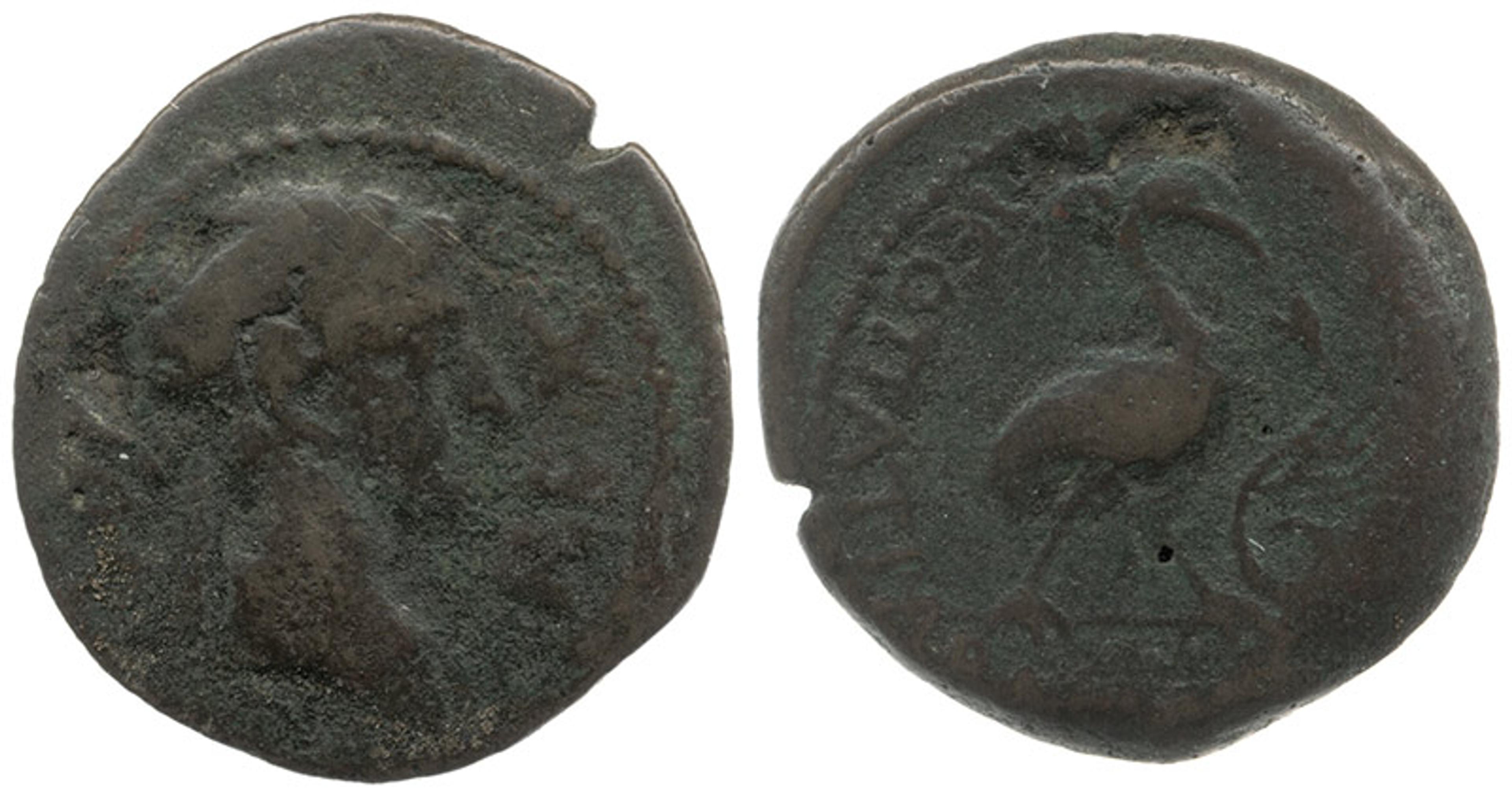
Coin depicting Cleopatra Selene and, on the obverse, an Ibis attacking a snake. Courtesy the British Museum
On one issue, we see a portrait of her wearing a diadem and the Greek legend KLEOPATRA BASILISSA on the obverse face, and a crocodile and the Greek legend KLEOPATRA BASILISSA on the reverse, the crocodile being an animal particularly associated with Egypt in this period that had also previously appeared on the coinage issued in her name on Crete in the 30s BCE. On another, we see an ibis attacking a snake, perhaps a veiled reference to her mother’s death and the mythology that had started to grow up around it during the Augustan Principate. On a third, we see the accoutrements of the goddess Isis, her mother’s favourite deity, her crown featuring the sun disk and cow horns and her sistrum atop the Greek legend KLEOPATRA, and on a fourth we see Isis’ crown atop a crescent moon, the symbol of the Greek goddess Selene, after whom Cleopatra Selene had been named, and the Greek legend KLEOPATRA BASILISSA.
Cleopatra Selene ruled alongside Juba as his equal, not as his subordinate
On a fifth coin, intriguingly, we see Isis’ crown surmounted by a crescent moon containing a globe, the symbol of the oikoumene, the ‘known world’ or the ‘inhabited world’ in Greek and Roman eyes, accompanied by the Greek legend BASILISSA KLEOPATRA. Evidently Cleopatra Selene continued her mother’s patronage of that goddess. On occasion, Juba joined in and honoured his wife’s heritage by replacing his portrait with one of the ram’s-horned god Amun accompanied by the Latin legend REX IUBA, while Cleopatra Selene followed in her mother’s footsteps by depicting herself in the guise of the goddess Isis accompanied by the Greek legend BASILISSA KLEOPATRA. Since a statue of Amun has been found in Iol Caesarea, it is possible that Juba went further than simply depicting Amun on his coinage and actually presented himself as a living manifestation of him, with Cleopatra Selene presenting herself as Isis, just as her parents had presented themselves as Hercules or Dionysos and Isis on numerous ceremonial occasions. Perhaps Cleopatra Selene was responsible for this suggestion, something that they could get away with so far away from Octavian’s watchful eyes in Rome. Amun was a highly suitable choice for Juba as he was king of the Egyptian pantheon, and often equated with Zeus, the king of the Greek pantheon, elsewhere in the ancient Mediterranean. Indeed, Cleopatra Selene’s renowned relative Alexander the Great had claimed to be the son of Amun, and consequently he was often depicted with the god’s ram’s horns by his general Lysimachus who became the King of Thrace after Alexander’s death.
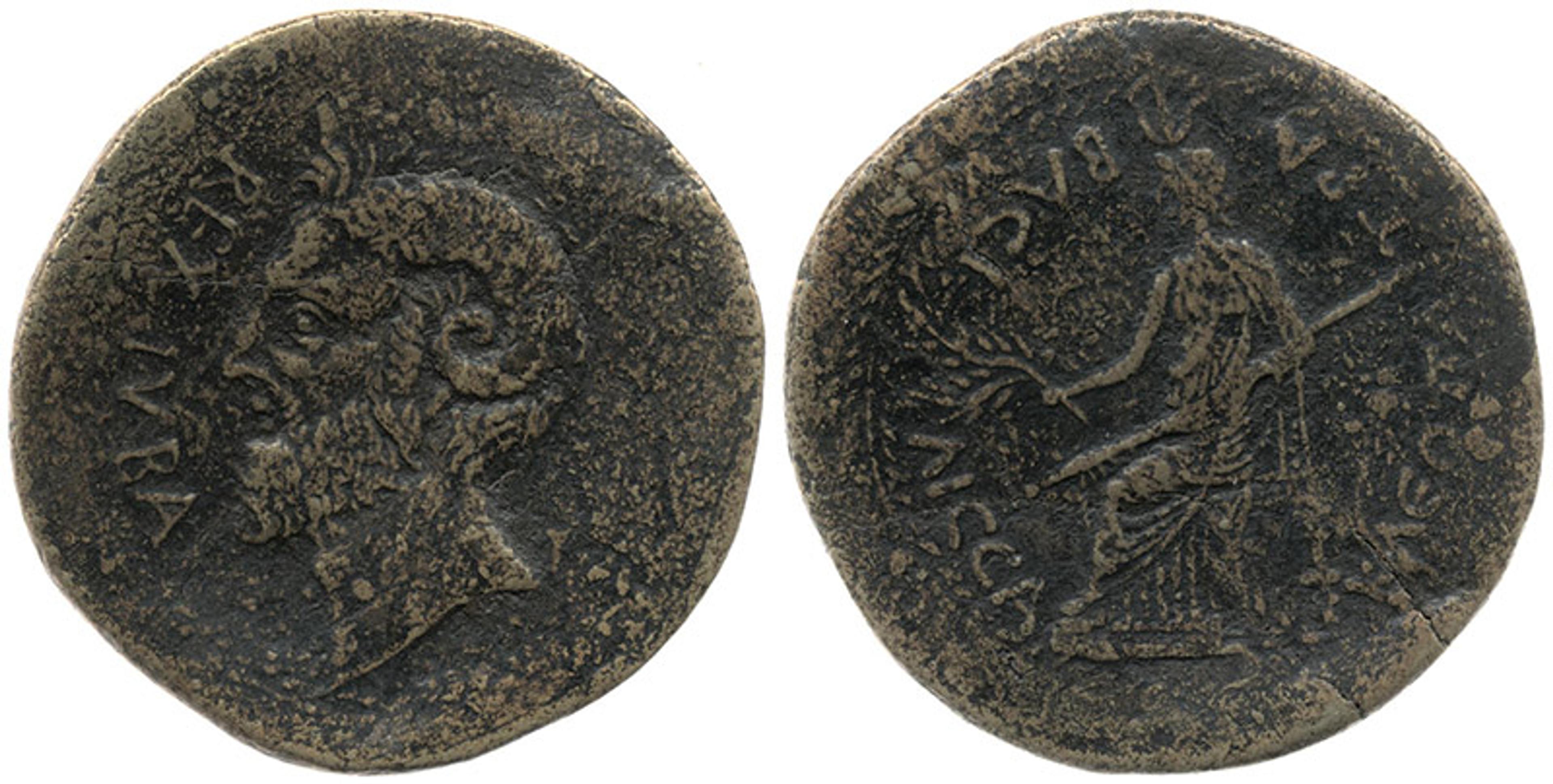
Copper alloy coin depicting Juba as the horned god Amun, with Cleopatra Selene as Isis on the obverse. Courtesy the British Museum
Additionally, Cleopatra Selene also issued her own autonomous coins with no reference to Juba at all, and these are covered not only with references to herself, such as crescent moons, referring to her second name, but also Egyptian motifs, such as crocodiles, ibises and the accoutrements of the goddess Isis. Her portraits indicate that she followed the example set by her mother and presented herself in the manner of a Hellenistic queen, with her hair styled in the ‘melon’ coiffure and held in place by a diadem, the traditional headwear of a Hellenistic king and, sometimes, even a queen.
Originally, a diadem was a strip of white cloth, knotted at the back of the wearer’s head, with the ends left dangling below. An alternative ancient headdress that was used to indicate the elevated status of its wearer was the stephane, a circlet with a pediment at the front that stood upright from the head. The early Ptolemaic queens who featured on coins, such as Arsinoe II, were depicted wearing the stephane topped by a veil rather than the diadem, indicative of their divine status. Despite her identification with the goddess Isis, Cleopatra VII preferred to portray herself wearing the diadem, perhaps meant to indicate her position as queen regnant rather than queen consort, and it seems that Cleopatra Selene followed her example in this, emphasising that she ruled alongside Juba as his equal, not as his subordinate.
Cleopatra Selene and Juba ruled Mauretania together until Cleopatra Selene’s relatively early death, after which Juba ruled Mauretania in conjunction with their son Ptolemy (note that, somewhat unusually, his name was taken from his maternal rather than his paternal lineage). Although the precise date of Cleopatra Selene’s death has not survived, a poem composed by Crinagoras of Mytilene commemorated the occasion, noting that it occurred fittingly in conjunction with a lunar eclipse:
The moon herself, rising at early eve, dimmed her light, veiling her mourning in night, because she saw her namesake, pretty Selene, going down dead to murky Hades. On her she had bestowed the beauty of her light, and with her death she mingled her own darkness.
She was interred in the mausoleum that she and Juba built, the remains of which can still be seen near Cherchell in Algeria today. Unfortunately, its contents are long gone, presumably looted many centuries ago. However, even after her death she remained a significant figure in the kingdom, and it was her coinage that facilitated this. A hoard of coins deposited in around 17 CE near Tangier contains coins that can be dated to the period 11-17 CE and includes those not only issued by Cleopatra Selene and Juba together, but also those issued by Cleopatra Selene alone, indicating that her coinage was not taken out of circulation upon her death and was still in use by her former subjects for more than a decade after her death, enabling her husband and son to continue benefitting from her lustre in order to stabilise their joint reign.
